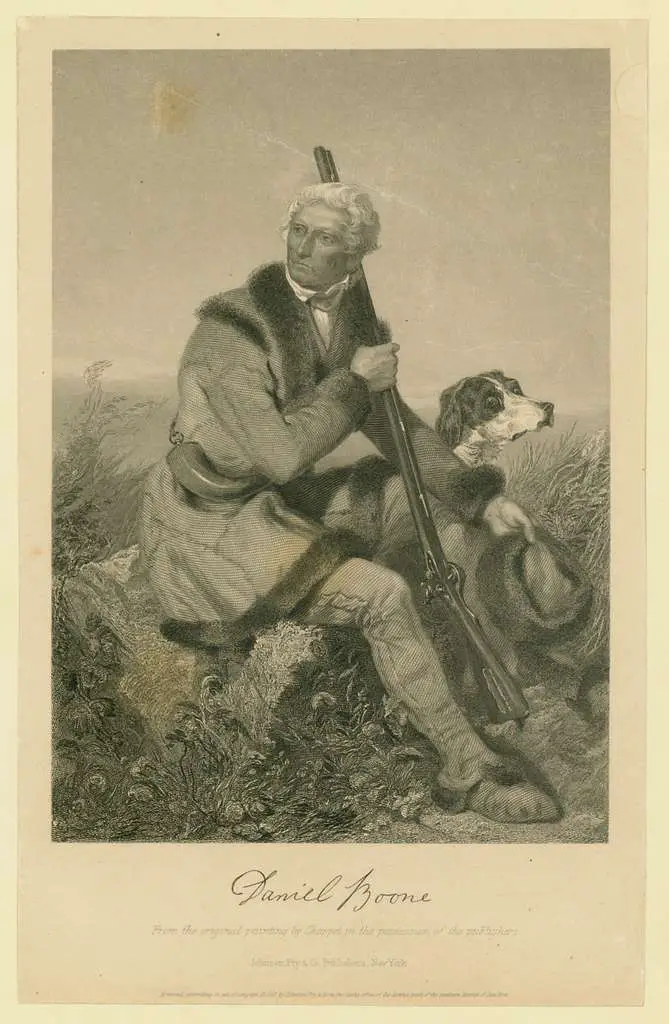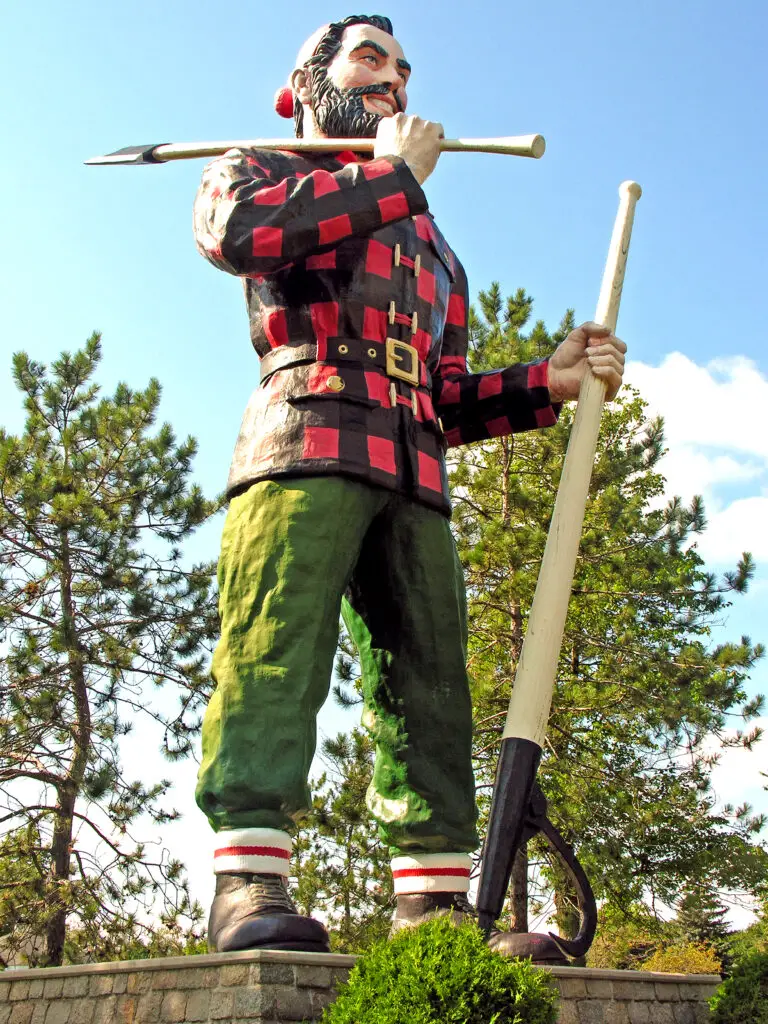The stories of America’s frontier days have been shaped by a collection of characters so full of grit and legend that they almost seem larger than life. These figures were pioneers, explorers, sharpshooters, and cowboys who embodied the spirit of adventure and self-reliance. Over the years, their feats have been celebrated, exaggerated, and immortalized, turning them into enduring icons of American folklore. Let’s take a nostalgic journey back to some of the most legendary figures who became myths in American history.
1. Buffalo Bill Cody: The Showman of the Wild West

William “Buffalo Bill” Cody was as much a performer as he was a legend of the frontier. Born in 1846, Cody earned his nickname as a buffalo hunter for railroad companies, but he achieved international fame through his creation of Buffalo Bill’s Wild West show. This traveling spectacle celebrated the romance of the American West, featuring reenactments of battles, sharpshooting displays by Annie Oakley, and cowboy stunts. Buffalo Bill became a walking embodiment of the mythic Wild West, bringing the imagery of cowboys and Indians to audiences in the U.S. and Europe. His larger-than-life persona helped solidify the narrative of the “wild” frontier, making him an enduring figure in American mythology.
2. Annie Oakley: Little Sure Shot
Annie Oakley was the original sharp-shooting superstar, a woman who shattered gender norms with a rifle in her hands. Born in 1860, Oakley began hunting at a young age to support her family, and by her teens, she was an unbeatable shot. She rose to fame through her performances in Buffalo Bill’s Wild West show, where she could hit dimes tossed in the air and shoot the ash off a cigarette held by her husband. Her legend grew as her skill with firearms became mythologized—earning her the nickname “Little Sure Shot.” Oakley’s influence has since transcended her time, symbolizing female empowerment and the wild, untamable spirit of the West.
3. Davy Crockett: King of the Wild Frontier
Davy Crockett’s name has become synonymous with American courage and toughness, particularly because of his death defending the Alamo in 1836. But before that, Crockett was known as a larger-than-life character—an outdoorsman, politician, and folk hero. Born in 1786, he was an expert marksman and hunter, but he also served in Congress, where he was known for his folksy charm and homespun stories. Crockett’s image was amplified by early American press and storytellers, casting him as a rugged individualist standing up for the common man. His coonskin cap and frontier attire made him a cultural icon, inspiring plays, movies, and even a popular television show in the 1950s.
4. Daniel Boone: The Ultimate Frontier Explorer

Daniel Boone is often remembered as the archetypal frontiersman, a man who opened the gateway to the American West. Born in 1734, Boone became famous for his explorations and settlement of what is now Kentucky. His daring spirit and survival skills in untamed wilderness captured the public’s imagination, particularly through the stories of his conflicts with Native American tribes. Boone’s legendary status was cemented through dime novels, paintings, and even television shows in the mid-20th century, which turned him into a symbol of American adventure and rugged independence. To this day, Boone’s name conjures up images of coonskin caps and fearless exploration.
5. Pecos Bill: The Cowboy Legend of Tall Tales
Though Pecos Bill is more of a fictional character than a real person, his legend has roots in the American West and the imagination of frontier storytellers. Pecos Bill is the ultimate cowboy, known for outrageous feats like riding a tornado or lassoing the Rio Grande. First popularized in the 1910s and 1920s, his tall tales reflect the wild spirit of the West, where anything seemed possible. Whether or not you believe Bill really existed, his stories embodied the larger-than-life spirit of frontier mythmaking, reminding us that America’s cowboy culture was as much about imagination as it was about fact.
6. Wild Bill Hickok: The Gunslinger of the West
Wild Bill Hickok was the quintessential Western gunslinger, a man whose real-life exploits were almost as dramatic as the legends they inspired. Born in 1837, Hickok was a lawman, gambler, and notorious gunfighter. His quick draw and sharp shooting made him famous in saloons and on the streets of frontier towns. Though he met his end in a card game gone wrong, Hickok’s reputation as a gunslinger was immortalized in dime novels and Wild West shows. His persona was built on a mix of fact and fiction, and over time, he became a symbol of both the law and lawlessness of the American West.
7. Calamity Jane: The Tough-as-Nails Frontier Woman
Calamity Jane, born Martha Jane Cannary in 1852, became one of the most enduring female figures of the American West. Known for her rough-and-tumble lifestyle, she worked as a scout, performed in Buffalo Bill’s Wild West show, and became famous for her sharpshooting abilities and fierce independence. Calamity Jane’s reputation grew through her own storytelling, and many of the tales surrounding her exploits—like her supposed friendship with Wild Bill Hickok—were likely exaggerated or fabricated. Nonetheless, she has become an iconic figure, representing the grit and tenacity of women in the untamed frontier.
8. Kit Carson: The Scout Who Opened the West
Kit Carson was a famous frontiersman and scout, born in 1809. His knowledge of the American West was unmatched, and he served as a guide for expeditions, including those of John C. Frémont. Carson’s exploits in mapping and traversing the West made him a household name, and his adventures were widely romanticized in books and newspapers. Carson was known for his survival skills, his interactions with Native American tribes, and his military service during the Mexican-American War. Over time, he became a symbol of the pioneering spirit, his name forever tied to the opening of the Western frontier.
9. Jesse James: The Outlaw Turned Folk Hero
Jesse James is one of America’s most famous outlaws, but his status as a folk hero has often overshadowed his criminal record. Born in 1847, James and his gang carried out a series of bank and train robberies across the Midwest. What set him apart was the way his legend grew in the aftermath—newspapers often portrayed James as a Robin Hood figure, stealing from the rich and (supposedly) giving to the poor. Though this wasn’t quite the reality, his mythic status was cemented after his assassination in 1882. His life story, full of crime, betrayal, and revenge, has been retold in countless books and films, turning him into one of America’s most notorious—and celebrated—outlaws.
10. Paul Bunyan: The Giant Lumberjack of American Folklore

Paul Bunyan is another figure who straddles the line between myth and legend, though he is more a product of American folklore than history. Described as a giant lumberjack with superhuman strength, Bunyan was said to have created landmarks like the Grand Canyon with his ax and tamed the wilderness with his giant blue ox, Babe. Originating in tall tales from the logging camps of the late 19th century, Paul Bunyan represents the pioneering spirit of America’s industrial age. His legend grew through oral stories, books, and advertising, making him an enduring symbol of the country’s larger-than-life frontier culture.
These larger-than-life figures are more than just names from history—they are legends who represent the untamed spirit of America’s early days. Through mythmaking, storytelling, and a bit of exaggeration, their feats have been immortalized, inspiring generations to look back on the past with a sense of awe and adventure. Each of these characters—real or imagined—helps paint a picture of a time when the West was wild, opportunities were endless, and the human spirit knew no bounds.


